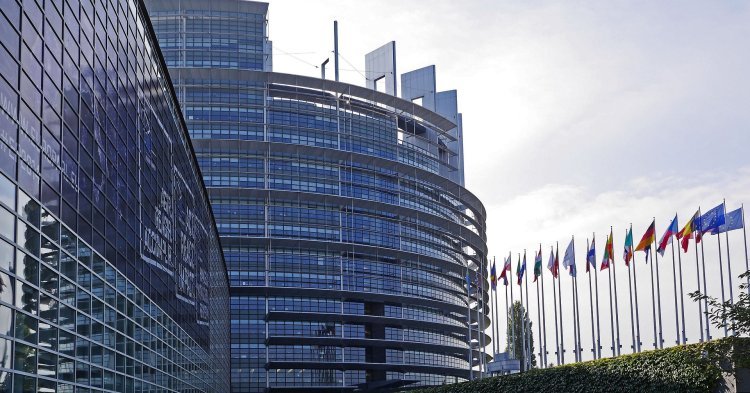On January 14, deputy prime minister and Five Star Movement leading figure Luigi Di Maio travelled from Italy to Strasbourg by minivan to kick off his party’s campaign for the European elections. He took the opportunity to point out the yearly cost of the MEPs “grand déménagement” from Brussels to Strasbourg. To quote di Maio: “for about 40 days the MEPs spend in Strasbourg every year, it costs nearly €1 billion per parliamentary term to European taxpayers, Italians included.”
And di Maio continues, pointing to the Parliament at his back: “What you see is not only a waste of money but also a symbol of arrogance coming from those who waged war against us on the Italian budget”.
Indeed, after a period in which the Italian government and the European Commission clashed over budgets, Di Maio’s argument is extremely convenient. Even if the problem doesn’t seem solved yet, it was enough to revive the question of the seat of the European Parliament.
Before entering the subject, let’s first focus on the history of the EP’s seat.
It was when the European Coal and Steel Community (ECSC) became the European Economic Community (EEC) that the Assembly was created. Composed of consultative members from Euratom, the European Defence Community, and the European Economic Community, the Assembly held its first session on March 19th, 1958, in Luxembourg. During the Paris Summit of 1974, it was decided that every MEP should be elected by universal suffrage.
In 1992, EU national governments decided to lay down the official locations of the EU institutions in the treaties. The official seat of the European Parliament, and the venue for most of the plenary sessions was decided to be Strasbourg, parliamentary committees were to have their meetings in Brussels, and the Parliament’s Secretariat (the staff) would officially be based in Luxembourg.
Why split the European Parliament in three?
It was very hard for the founding countries to choose where each institution of the ECSC should be seated, everyone wanting their part of the cake. In the absence of a unanimous agreement on Brussels, Luxembourg was chosen. Because there was no chamber big enough there to host ESCS’s Parliamentary Assembly, they went to Strasbourg to hold their plenary sessions. Indeed, with the Council of Europe’s chamber, the Alsacian capital already had the infrastructure to host such gatherings.
From 1952 onwards, Strasbourg, the symbol of Franco-German reconciliation, became the meeting place for the MEPs’ plenary sittings.
But why not have the secretariat and the committees come to Strasbourg too?
Because in 1957 the European Economic Community was born and the activities of the Community increased, with an important part of the institutional activity headed towards Brussels. With Luxembourg having the Court of Auditors and the European Court of Justice, and Brussels having the European Commission and the Council, it kind of made sense to have most of the European Parliament’s activity in Brussels.
After years of struggle with Belgium, in 1992 France finally obtained the title of “official seat” of the European Parliament. This agreement was officially adopted in the Treaty of Amsterdam (coming into effect in 1999), but in reality, the title remains practically empty. With only twelve plenary sessions per year, it seems that the Louise Weiss building, inaugurated in 1999, is empty 99% of the time. But what hurts the most is the cost of its construction: 3.1 billion French francs (470 million euros).
What, then, is the point of having a building that has required such an enormous sum to be built, costs a lot to maintain, and, moreover, also implies travel expenses for MEPs?
The central point of the conflict is the costs.
A 2013 study by the European Parliament showed that €103 million could be saved per year, should all EP operations be transferred from Strasbourg to Brussels (in 2014 prices). One year later, the Court of Auditors confirmed the EP’s conclusions, but with a total expenditure of €109 million per year. Even though it only represents 6% of the Parliament’s budget, and 1% of EU’s administrative budget, this is still a significant amount.
This can explain Di Maio’s comment.
In 2007, a study commissioned by Green politicians Jean Lambert and Caroline Lucas said that the cost of the extra seat is €200 million, and that 20,286 tonnes of carbon dioxide are emitted into the air as a result of the necessary travels, undermining the EU’s efforts to cut down on greenhouse gases.
But we have to remember something: this has been decided by member states themselves, as it has been written in a treaty, requiring unanimity among all governments and ratification by each of their national parliaments.
So basically, what’s been done by the member states can only be undone by them.
In the difficult context we find ourselves, it will be hard to find a workable majority for a new treaty and a new solution. But neither can we content ourselves with a status quo, especially after having exposed the economic and environmental cost of having the European parliament’s seat in three different countries.
As the European Association of Young Entrepreneurs (AEJE) proposed, why not experiment the centralisation of the entire parliamentary activity in Strasbourg for the next legislature (2019-2024)? Indeed, with the Brussels building requiring maintenance (up to €500 million), the context is nothing but favourable for showing everyone that you don’t necessarily need to be located in the Belgian capital in order to be efficient.
With Brussels already having both the Commission and the Council, why not give Strasbourg the European Parliament, seeing as a suitable building accompanied by the necessary infrastructure is already here?



1. On 22 June 2022 at 12:01, by Wayne O’Driscoll Replying to: The permanent seat of the European Parliament: Why not Strasbourg?
Replying to: The permanent seat of the European Parliament: Why not Strasbourg?
I’m afraid you seem to have answered your own question in the final analysis.
The fact that Brussels already has the Headquarters of the Commission and the Council is a huge reason for permanently locating the Parliament in BXL as well. Not just to avoid the huge financial burden mentioned by Sgr di Maio, but also to speed up logistics and make sense to the European electorate/taxpayers at large.
The Covid pandemic and successive lockdowns proved that there is no real justification for allowing MEPS a three-day-a-month paid stopover in SBG for photo opportunities!
Great article, nevertheless.
Follow the comments: |
|
